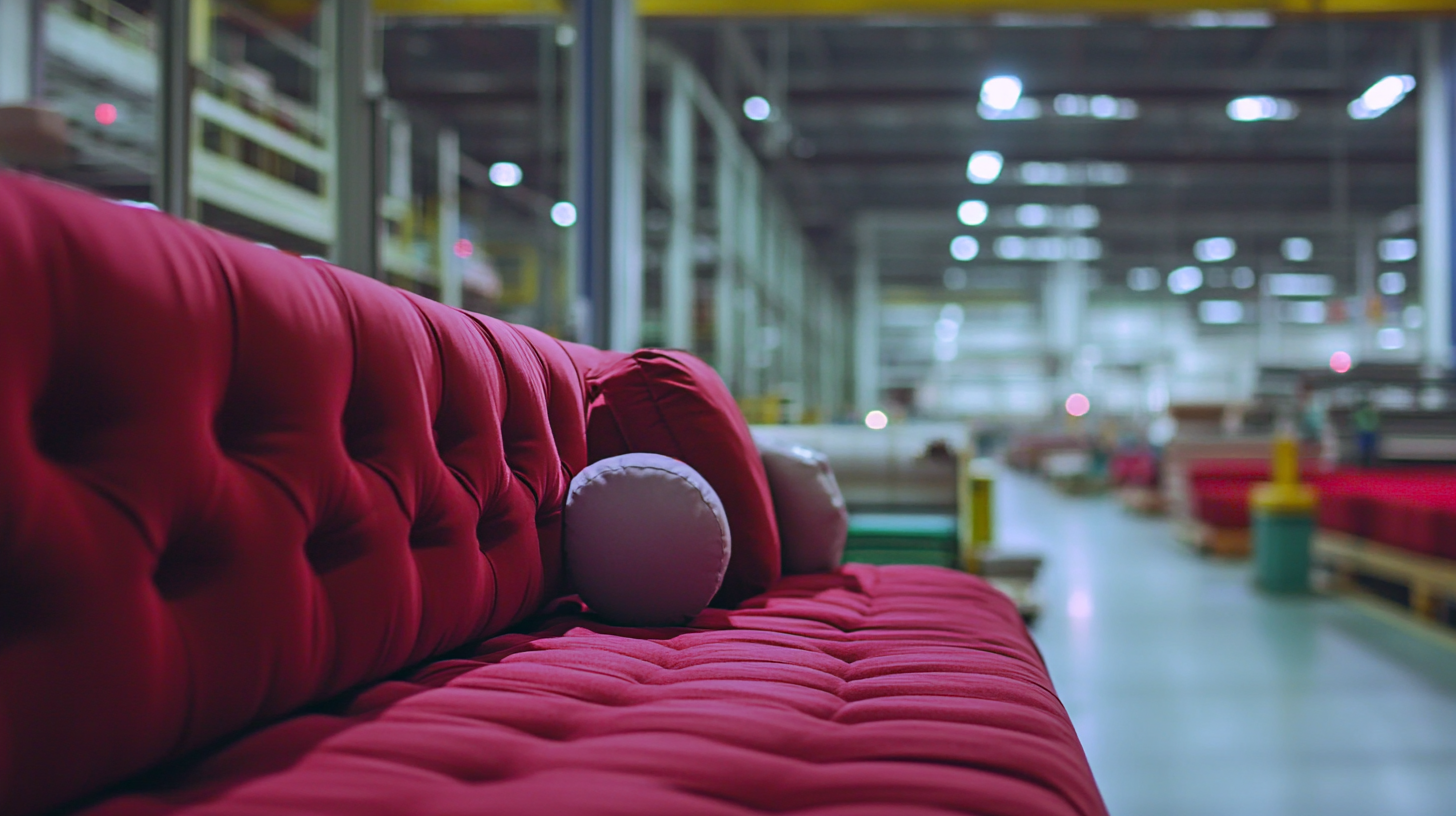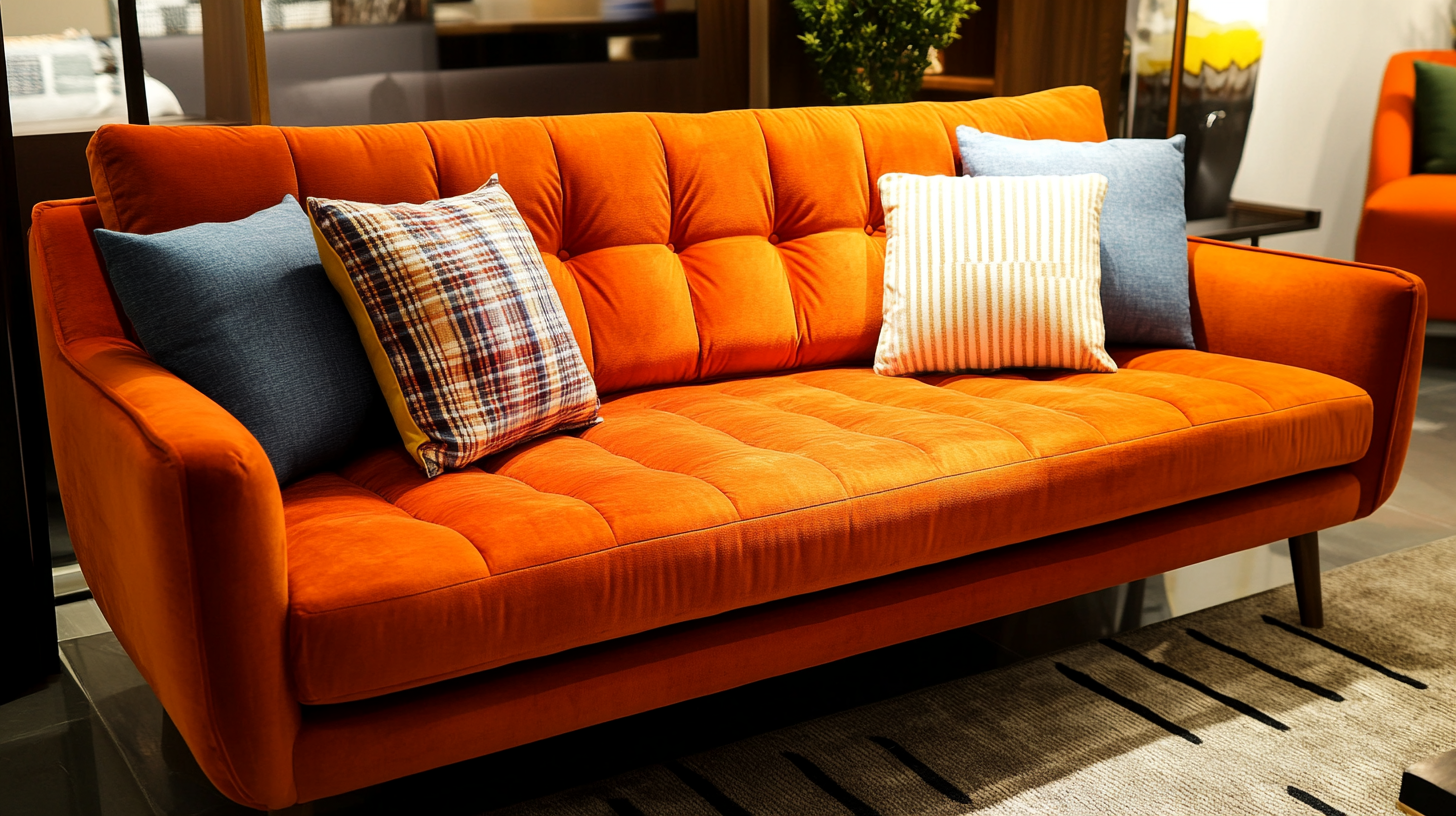Navigating Tariff Challenges: How China's 'Best Home Sofa' Manufacturing Thrives Amidst US-China Trade Tensions
In recent years, the global landscape of trade has been increasingly shaped by tensions and tariffs, particularly between the United States and China. Amidst this evolving scenario, China's 'Best Home Sofa' manufacturing sector has demonstrated remarkable resilience and growth. As tariffs have been implemented to regulate trade flows, manufacturers have had to navigate complex challenges to maintain their market position. This blog explores how these companies have adapted their strategies in response to the shifting trade policies, focusing on innovations in production, supply chain management, and customer engagement. By examining the success stories within the home sofa industry, we can gain insights into the broader implications of trade dynamics and the ways in which Chinese manufacturers are not only surviving but thriving in a competitive global market.

Understanding Tariff Impacts on the Sofa Manufacturing Industry
The sofa manufacturing industry has been significantly impacted by the ongoing US-China trade tensions, particularly concerning tariffs that have altered the cost landscape. With increased tariffs on Chinese goods, manufacturers have been compelled to navigate a complex web of regulations and shifting market dynamics. For many, this has meant a scramble to either absorb the additional costs or find ways to innovate production processes that enhance efficiency while minimizing tariff exposure.
Amidst these challenges, China's "Best Home Sofa" manufacturing has shown resilience. By leveraging local materials and optimizing supply chains, manufacturers are establishing a competitive edge that allows them to maintain quality and affordability. Additionally, some companies are investing in overseas production facilities to reduce dependency on tariffs altogether, a strategy that is quickly gaining traction. This adaptability not only helps them thrive in a turbulent market but also sets a precedent for other industries facing similar challenges in the wake of global trade disputes.
Navigating Tariff Challenges in the Sofa Manufacturing Industry
This chart illustrates the impact of U.S. tariffs on Chinese sofa exports over recent years, showing the trend in export values amidst trade tensions.
China's Strategic Responses to US Trade Policies
China's furniture manufacturing sector, particularly the ‘Best Home Sofa’ segment, has had to adapt quickly to fluctuating US trade policies. In 2020, the US imposed tariffs of up to 25% on certain Chinese goods, which initially threatened the profitability of sofa exports. However, as reported by the China National Furniture Association, China accounted for 60% of US sofa imports in 2022, demonstrating the sector's resilience. Manufacturers have adopted strategic measures such as diversifying supply chains to countries with lower tariffs and investing in automation to maintain competitive pricing without compromising quality.
In response to these trade tensions, many Chinese companies are focusing on enhancing their product offerings and improving domestic supply chains. According to a report by Mordor Intelligence, the global sofa market is expected to grow at a CAGR of 3.5% from 2023 to 2028. This growth presents an opportunity for Chinese manufacturers to pivot towards innovation and sustainability, with environmentally friendly materials and production processes becoming a selling point. By aligning their production strategies with these market trends, Chinese sofa manufacturers are not only mitigated against tariff impacts but are also positioning themselves as leaders in the evolving global furniture landscape.
Innovative Manufacturing Techniques Driving Growth
Amidst the ongoing US-China trade tensions, China's "Best Home Sofa" manufacturing sector exemplifies resilience through innovative manufacturing techniques. The emphasis on innovation as a driver for growth aligns with the recent directives from the Central Economic Work Conference, which advocates for bolstering the real economy and harnessing innovation to cultivate new momentum. This perspective is supported by observed trends, indicating a continuous increase in sales revenue within China's manufacturing industry, demonstrating a 50.64% increase in revenue during the first quarter of 2024.
Moreover, the focus on high-quality development is evident as new productivity metrics are integrated into the national agenda, with reports suggesting that the core industry of the digital economy will account for around 10% of the GDP by 2025. This strategic shift towards high-tech industries, coupled with the push for artificial intelligence integration, underscores the necessity for businesses to innovate. The insights from industry experts further highlight that the trajectory of economic recovery is now fueled by technological advancements, ensuring the sustainability and competitiveness of China's manufacturing sector in global markets.
Navigating Tariff Challenges: How China's 'Best Home Sofa' Manufacturing Thrives Amidst US-China Trade Tensions - Innovative Manufacturing Techniques Driving Growth
| Year | Export Value to US (in million $) | Tariff Rate (%) | Manufacturing Investment (in million $) | New Technologies Adopted | Production Growth (%) |
|---|---|---|---|---|---|
| 2020 | 350 | 25 | 120 | Automated Cutting Machines | 5 |
| 2021 | 400 | 25 | 150 | 3D Printing Technology | 8 |
| 2022 | 450 | 20 | 180 | AI-Driven Design Software | 12 |
| 2023 | 500 | 15 | 200 | Smart Inventory Management Systems | 15 |
The Role of Quality and Branding in Competing with Alternatives
In the face of escalating US-China trade tensions, manufacturers like those producing China's "Best Home Sofa" have recognized that quality and branding are pivotal in maintaining competitiveness against alternative options. According to a report by Statista, the global furniture market is expected to reach approximately $650 billion by 2027, with a significant segment driven by consumer preference for durable and stylish furniture. This trend indicates that quality can be a decisive factor for consumers when faced with higher tariffs on imports, allowing top-tier brands to capitalize on their reputation.
Moreover, branding has emerged as a crucial strategy in this competitive landscape. Research conducted by Nielsen reveals that 60% of consumers prefer to buy from brands they know and trust. In response, many Chinese manufacturers are investing in marketing campaigns that emphasize their product quality and unique designs, ensuring they stand out in an oversaturated market. By building a strong brand narrative around craftsmanship and customer satisfaction, they not only attract loyal customers but also expand their reach to international markets that may be wary of cheaper, less reliable alternatives. This dual focus on quality and branding is enabling China's "Best Home Sofa" manufacturing sector to thrive despite the prevailing tariff challenges.

Future Trends for China's Sofa Industry Amid Ongoing Trade Tensions
China's sofa industry is undergoing significant transformation as it adapts to ongoing US-China trade tensions. According to a report by Research and Markets, the global sofa market is projected to grow at a CAGR of 4.2% from 2021 to 2026. This growth provides an opportunity for Chinese manufacturers to strengthen their foothold in the international market despite tariff challenges. By investing in innovative designs and sustainable materials, companies like "Best Home Sofa" are setting trends that prioritize both aesthetic appeal and eco-friendliness, aligning with consumer preferences in North America and beyond.
Furthermore, as tariffs on imported goods continue to fluctuate, Chinese manufacturers are leveraging digital platforms and e-commerce to reach a broader audience. The China National Furniture Association reports a surge in online sales, which accounted for 35% of total sofa sales in 2022. This shift not only mitigates the impact of traditional retail challenges but also enhances profit margins by reducing distribution costs. As manufacturers adopt advanced technologies and optimize supply chains, they are better positioned to navigate the complexities of international trade, ensuring resilience and continued growth in the face of adversity.

